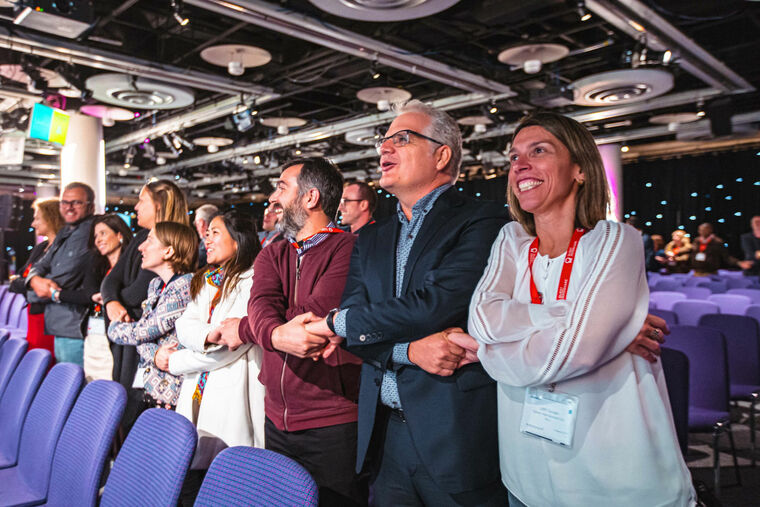Social listening has a long way to go
Do you always have to generate primary data to arrive at Qual insights?

Article series
Qualitative methods
- Safety and (dis)comfort in qualitative research
- Predictive qual
- Insight communities – hidden depths
- Brand ethics in pandemic time
- The hidden key to happiness
- Identity conflict
- Sales and market research
- Practising empathy
- Market research vs. UX research
- What do the futures of quant and qual methodologies hold?
- Social listening has a long way to go
- What I learned in my first 6 months as a market researcher
- Asking questions that will inspire more transformative insights
- Challenges of qualitative research today - Part 1
- Welcome to the Twatterverse!
- Challenges of qualitative research today - Part 2
- Best practices in writing a discussion guide
- Experience improvement
- The post-pandemic dominance of CRM and UX research
TLDR: No, social data is qual data. So, applying qual methods to interpreting social data will help you arrive at new sources of insight.
This might be an unpopular opinion, but Social Listening has a long way to go.
Most researchers I talk to are frustrated or sceptical.
With good reason.
We’ve been sold a dream, a wonderful new picture of our customers, rich with insight.
However, instead of a work of art, we got a dot-to-dot picture. We got the raw materials, not the finished masterpiece.
This is not a problem with social data.
Social data is profoundly interesting. It’s rich, deep, gritty, emotional, grounded. Which makes it valid, useful – the building blocks for insight.
Instead, it’s a problem with the current tools for making the most of it.
Having specialised in interpreting social data 10yrs+, I’ve got two observations:
Social listening platforms are fieldwork (it’s just data and tabs)
Most of the tools available in the market for analysing social data are quant
So, if we want to make the most of social data, we need a different approach.
Why don’t we think of social data as qual data?
I’d argue that social data’s essence (if not how it was created) is the same as qual data from primary research.
What people share on social are rich, deep, unstructured stories told through images, videos or text. Sounds like qual data to me.
When you think of social data as qual data, it opens a new set of tools for analysing it.
Of course, they’re not the same and that’s where the value lies. The opportunity isn’t to replace focus groups or depth interviews, it’s to do something different. Here’s the difference…
Primary qual allows you to explore in-depth
Social qual allows you to explore the breadth
Its value comes from the scale, being able to see the behaviours of thousands of people to give you a more comprehensive picture.
How do you apply qual methods to social?
This is an emerging field with lots of exciting innovations. Over the years, we’ve developed a method based on the following principles:
It’s a research project: so define the brief, agree on the scope, understand the impact the project will bring, share the research approach and tools, and collaborate.
Find your track to run on: proper research needs a repeatable, logical, methodological approach. We found Grounded Theory lends itself very well to the analysis of social data. Grounded Theory is a framework for finding signals within data and then building these into explanatory categories to ultimately answer to your research question. It’s about using the data to frame your analytical approach (rather than most primary methods, which start with a question and then collect data to answer these questions)
Develop the right analytical tools: then, when you get into analysing the data itself, develop skills in discourse, narrative and thematic analysis (among others). This will enable you to unpack the meaning in the social data you’re interpreting thoroughly and consistently.
Codify the data: we develop sophisticated code frames to help structure our analysis of social data. These are developed from what’s in the data (rather than applying pre-existing taxonomies). This ensures we capture the detail and nuance. We’ve built a team that can then code large volumes of social data. This sounds time-consuming, and it is an investment, but I’ve not seen an automated approach that can beat it.
Quantify the data: when you’ve codified data, you can run the numbers to explore frequencies and patterns in it. Yes, this is quant, it’ll give you the outline of the story.
Deep dive: once your picture has an outline, it’s time to start filling in the detail. Here’s where we deep dive into the data using thematic and narrative analysis techniques to find and understand the meaning in the data
Synthesis: it’s then time to bring the elements together to complete the picture. It’s about understanding the broader cultural context these stories form part of, and what this means for the objective you’re working towards
What can social qual be used for?
We’ve seen this approach be used to help organisations develop strategy, define their sense of purpose, communicate more effectively and develop better products and services.
Case Study: How the British Red Cross learnt to talk about loneliness
The question: The British Red Cross works in the UK to connect human crisis with human kindness and encourage resilient communities where people look after each other. As part of this, it sought to raise public awareness and understanding, provide suitable services, and influence policy concerning loneliness.
The approach: Loneliness is often hidden and rarely spoken about out loud. There’s a stigma about it, and our understanding is shaped by dated stereotypes. However, social media’s veil of anonymity gives people a safe space to talk and an opportunity to better appreciate and understand.
Scoping: we started working with the British Red Cross to understand the nature of their challenge. What they already knew, what activities and strategies were already in place and what they had tried before. Then from a technical perspective, we spent time working out what exactly they meant by loneliness so that we could map this audience profile onto the social data.
Data collection: we then used our social listening partner to find conversations among people dealing with loneliness. We use Brandwatch because of its access to historical data and its more ‘research-grade’ data collection tools. A common misconception about social data is that it’s people showing off or arguing, but the reality is it’s often much more reflective of actual life. The anonymity of online forums makes people feel comfortable sharing very personal aspects of their lives.
Finding meaning in the data: in the next stage of the project (deploying our grounded theory approach), we made sense of the data. We reviewed a sample of several hundred comments, looking to identify the different ways that people express themselves. This uses discourse analysis techniques to unpack the data and pull out the different signals. We then refined these signals into a set of categories that captured each element of the online discussion about loneliness. This provided us with a code frame to help interpret the rest of the data.
Codifying the data: once the code frame was in place, we read a large, random sample of comments from people talking about their loneliness. Applying the code frame in this way enabled us to quantify the nature of the conversation and gave a structure for analysing the data in the next stage.
Finding patterns: we then ran quantitative analysis on the coded data, exploring frequencies, patterns and relationships between the variables. It was this stage that allowed us to identify the beginnings of a series of loneliness personas.
Finding meaning: this quantitative analysis then guided a deeper, more qualitative analysis. Using thematic and narrative analysis techniques, we explored the meaning behind each persona; what combination of experiences, attitudes and emotions brought defined each group.
Telling the story: the final stage was to draw what we’d learnt together to help tell a story of loneliness that would help the British Red Cross empathise and communicate with them more effectively. Through synthesis sessions, we developed a narrative to help challenge the stereotypes and normalise ideas of what loneliness is. Using our personas, we were able to show the dynamics of loneliness (how it happens) as well as making it all less abstract and more human.
The answer: In the words of Siobhan Smith, Research Manager
“This has helped us understand what lonely people need. The immediate impact was to equip marketing, policy, fundraising and our operational teams to talk credibly, authentically and engagingly about loneliness and social isolation, using the right language for the right scenarios and finding case studies that resonate. Following our Connected Communities (loneliness) campaign, our brand tracker showed a significant uplift in positive perceptions and consideration to support. Thousands of people also signed up to become community reserve volunteers, to share their kindness with isolated people.”
What next?
We’ve just published a comprehensive, free guide to help researchers start using social data to create qual insight. Please let me know, and I’d be happy to share it with you.
Jeremy Hollow
Founder & MD at Listen + Learn ResearchJeremy Hollow is the Founder and MD of Listen + Learn Research, which he’s actively building into the leading global authority on the human side of social data.
What started as an idea born from a run in the woods, has become an award-winning agency (Marketing Week, Aura). Success has come from helping brands really understand the people who matter to them and applying this knowledge to help create growth.
A black belt, passable cook and amateur dad. He also writes for This Social Life a blog about how people live their lives on social media.
Article series
Qualitative methods
- Safety and (dis)comfort in qualitative research
- Predictive qual
- Insight communities – hidden depths
- Brand ethics in pandemic time
- The hidden key to happiness
- Identity conflict
- Sales and market research
- Practising empathy
- Market research vs. UX research
- What do the futures of quant and qual methodologies hold?
- Social listening has a long way to go
- What I learned in my first 6 months as a market researcher
- Asking questions that will inspire more transformative insights
- Challenges of qualitative research today - Part 1
- Welcome to the Twatterverse!
- Challenges of qualitative research today - Part 2
- Best practices in writing a discussion guide
- Experience improvement
- The post-pandemic dominance of CRM and UX research


